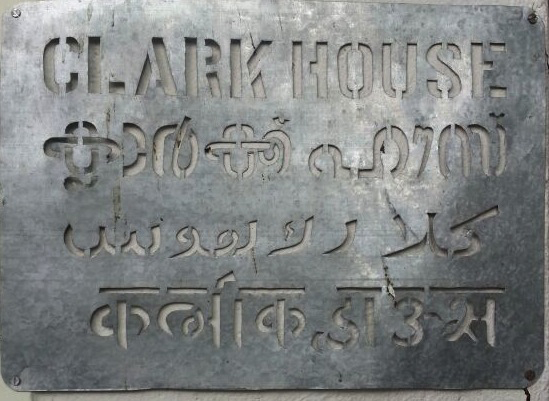Clark House, built in 1908, is located off the pier that leads to the Gateway of India. It has been home to many strange histories, histories that one learns mainly through the narration of its former residents. This archive entry, therefore, is essentially based on one such oral history and thereby draws on the memories of Mrs. Aruna Sharma, wife of Chaturbhuj Sharma, whose international shipping company operated out of Clark House between 1955 and 1992.
Clark House, at Old Wodehouse Road (now Nathalal Parekh Marg) in Bombay Colaba, was a place that hosted activities of both an economic and a cultural nature. The people who lived there were well connected, with widespread transnational and transcultural contacts. Clark House’s proximity to the port and to landmarks such as the Taj Mahal Hotel, the National Gallery of Modern Art, the Chatrapati Shivaji Maharaj Vastu Sangrahalaya – the former Prince of Wales Museum of Western India – and the Fort district made it a popular place with people involved in trade and cultural activities.
The Strangers Guest House, located at Clark House between 1940 and 1962, was very much a home for long-term guests who included working executives from abroad as well as sailors. It was run by a man from Baghdad and a woman from Eastern Europe, both of Jewish background. The Czechoslovak consulate was at the other end of Old Wodehouse Road.
Ram Bahadur Thakur & Co, established and run by the Sharma brothers, moved into Clark House in 1955, initially renting a small office in the premises of the Strangers Guest House. From there, the Sharmas operated their international shipping company that had trade links to countries in the Middle East, Eastern Europe and Japan. Their trading links with Czechoslovakia in particular were accompanied by cultural activities, for which Clark House was well suited. Events were held, such as Lidice Memorial Day, to commemorate the tragic fate of the Czechoslovak village Lidice where on 10 June, 1942, the Nazis carried out appalling atrocities. Lidice triggered immediate reactions around the world. In Bombay, Lidice Memorial Day became an annual event through which an appeal was made to artists around the world to donate work for an art collection and museum that was to be built in Lidice. (Wille 2020). This was how, Kattingeri Krishna Hebbar (K.K. Hebbar; 1911–1996) and Chintamoni Kar (1915–2005) came to donate work to the Lidice Collection (Wille 2020).
In more recent times, a group of curators – interested in Clark House’s international past as a place of contact – formed a curatorial collaborative to carry out artistic projects around ideas of freedom and internationalism. Zasha Colah and Sumesh Sharma began the Clark House Initiative in 2010 by retracing the many past histories connected to it as a pathway of alternative internationalism when globalisation was claiming its authorship of transnationalism not only in trade but also culturally via museum surveys, large-scale biennials and the auction market. The Clark House Initiative began in the filing department of the erstwhile Thakur Shipping company. In 2019 the initiative moved to Borivali as an Artist Union engaging in socio-political art.

